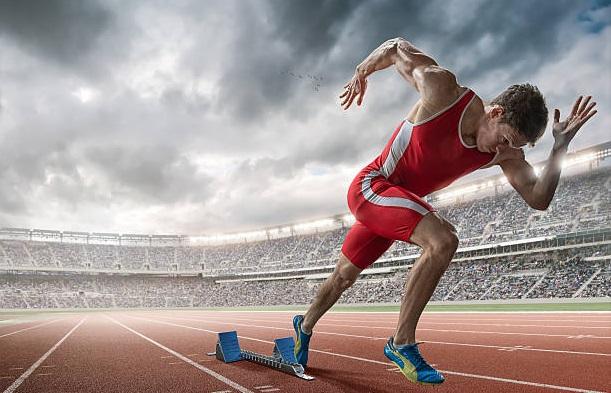Sport has formed an integral part of human culture for centuries now. Besides being an excellent way of staying fit and keeping our bodies moving, sportsmanship has also found its way into the professional world. Now, it is considered one of the many good options for an honorable career path. Marketing agencies are profiting from the field, and the athletes themselves can benefit from high salaries and millions of devoted fans. Bookmaker platforms have found numerous ways to offer bonuses and prizes to committed viewers who are willing to bet on their knowledge.
The Betwinner Kenya review includes all the necessary information for beginner gamblers and professionals seeking to explore modern betting services.
In the history of sport, the perception of its key elements by society has changed to fit the narrative of the time period. Without further ado, let’s explore those changes together.
We're now on WhatsApp. Click here to join.
Ancient times are known as the era of civilization, forming communities on some territorial basis. Over 5000 years in duration, the period entailed years of conflict, inventions, development, and culture enhancement. Interestingly, sports in ancient times were already a prospering area of social life. Wrestling, running, and equestrian races were prominent examples of the competitions held back then. Even more, the origin of the Olympic Games dates back to 776 BC in Ancient Greece. Although the ancient world seems to fit the modern-day athletic criteria, the public’s attitude towards the activity has definitely changed. In the earliest civilizations, any training and competition were primarily the product of religious beliefs. Even the famous Olympic Games were originally thought to be honored by Heracles, the son of Zeus. Most of the physical activity was either predisposed to spiritual motives or served as a celebration of the gifts given by Gods. One could argue that ancient sports set the plank for future athletes: the religious background and, therefore, high prestige of the path allowed little room for mistakes. A lot of the time, the festivals and competitions lacked basic safety, increasing the stakes for participants. People saw games as a serious activity, one that requires adequate mastering to avoid health hazards. Fun was definitely not the priority in ancient athletics. The Middle Ages showed a social division that led to the formation of “elite” sports, such as golf and horse racing, and a higher necessity for war training. Social classes were starting to form clear boundaries between one another in all areas, sports not being an exception.A lot more professional equipment was introduced, rules were established, and tournaments became a regular event in the upper-class world. The growing athletic development, however, seemed to come from a place of security and training rather than entertainment. The epic wars of the Middle Ages demanded strength, perseverance, speed, and skill – all of which are practical elements of any sport.Medieval citizens were able to find more than a religious purpose in practicing sports. Athletes were either showcasing their elite status in society or gaining strength through national tournaments. People started seeking more entertaining properties in a field of hard work and constant competition. Even so, athletics was still mostly predisposed by conflicts cross-culturally. A correlation between wealth and level of physical activity became more evident up to the 14th century. Sportsmen were either of upper-class origin or found ways to profit from their interests. This tendency ultimately paved the way for sports to be categorized into a separate career area and not just a past-time activity. A period of enlightenment, industrialization, colonization, and more international conflicts, the history of the 15th-20th centuries can still outline significant developments in the sports field. Team games were largely promoted, with more liberty granted to athletes following paradigm shifts all over the world. Athletic competitions became more audience-based than ever before, finally serving as leisure activities while being profitable to its participants. As the team spirit brought people together, a new sense of passion arose in the process. In competitions, fans showed their devotion financially and emotionally. Betting found its way onto the stadiums, and any game became even more intriguing. Gradually, more people found new ways to incorporate any kind of physical activity into their lives. Ultimately, every phase of the sport’s evolution has greatly contributed to the current state of the athletic school. Many of its aspects have been improved and modified to fit modern ethical standards. Grand sports competitions are stricter towards their participants, with the aim of providing equal opportunities and fairness for all.Inclusivity and equality prove to be the targets of modern sports, as athletic criteria have placed more emphasis on skills and passion than gender, ethnicity, or social class. There are more opportunities to become a member of a fitness group without certain predispositions. Most importantly, people are more focused on their personal journey and feeling strong than feeling pressure to perform well for others. Undoubtedly, commercialization plays a major role in the perception of athletics today. Dozens of markets optimize the sports markets to ensure mass usage and trending wellness products. Fitness bloggers prioritize showing their routines with the aim of having the audience replicate them, spreading physical activity throughout communities worldwide. Hence, many see sports today as part of their daily routine, an enjoyable and healthy aspect of one’s life. All the evolutionary changes of athleticism have morphed into professional and amateur aspects. What used to be sacrificial turned into defensive, which later resurfaced as leisure. Throughout history, sports remained to be a measure of willpower, endurance, and strength. While the risks and safety of competitions fluctuated, the positive elements of active recreation retained their relevance to our days. Now, as social norms place more emphasis on inclusivity and equality, modern athletes are actively sharing their thoughts on critical ethical issues. Ancient Times
Middle Ages
15th to 20th Century
Nowadays
Conclusion





